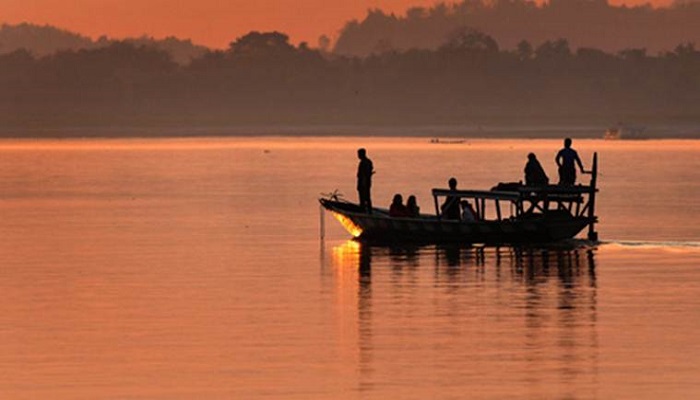
One of the mighty rivers of India is the Brahmaputra. But this mighty river is being polluted. Whose fault is it? India’s or her neighbor China’s?
China denied plans to construct a tunnel to divert Brahmaputra river waters amid reports of highly polluted waters from its tributary Siang flowing into India.
“I would like to point out that China’s position on the eastern part of the China-India border is consistent and clear,” Foreign Ministry spokesman Lu Kang said in response to questions about the reports on blackened, muddy waters with cement and sledge of the Siang river in Arunachal Pradesh.
He refuted reports that it may due to a tunnel being constructed on the Chinese side.
“I have never heard of the project mentioned by the Indian side. It is hoped that the Indian side will not conduct unfounded speculation and reports,” he said in a written response to a question in this regard.
In October, China had denied reports of plans to build a 1000-km long tunnel to divert Brahmaputra waters to the arid regions of Xinjiang, saying the report is untrue.
There is, however, no explanation for the highly-polluted waters in Siang river.
The Brahmaputra originates in Tibet where it is called the Yarlung Tsangpo and is known as Siang in Arunachal Pradesh before it enters Assam and flows southwards to the sea through Bangladesh.
In 2016, China had declared that it would be building a dam on a tributary of the river, sparking concerns about its potential downstream impact in India.
Arunachal Pradesh State Water Quality Testing Laboratory (SWQTL) in a recent report said the water of the Siang river, which has turned dark and muddy, has become unfit for human consumption.
Arunachal Pradesh Chief Minister Pema Khandu had drawn the attention of the Centre on the river’s contamination, which he said might have been caused due to activities on the Chinese side and asked the Government of India to take up the matter with Beijing.
Lungkang Ering, president of the All Bogong Students’ Union in the border district of East Sing, said in a letter to PM Modi:
“China is constructing several dams on the Yarlung Tsangpo. One big dam, the Zangmo dam, is already operational and about three to four other dams are under various stages of construction. The Zangmo dam is located just 3-4 kilometers (2-3 miles) from the Indian border and is 116 meters (380 feet) high,” according to Nayan Sharma, a leading Indian hydrologist at IIT Roorkee.
The Chinese Foreign Ministry said Tuesday that it had never heard of the project mentioned by Indian officials in Assam and Arunachal Pradesh states. In the past, China has denied such accusations without providing details or enunciating its long-term plans for the area.
India’s foreign ministry spokesperson did not reply to queries about whether India had raised concerns with China.
Kameswar Sahani, a fisherman in Arunachal Pradesh, told a local newspaper that dozens of fishermen like him have been forced to stop working on the Siang river.
Over the last few months, his catch went down to just 3-4 kgs from 30-40 kgs earlier. Sahani also said that customers were balking from purchasing fish from the Siang because of contamination fears.

Post Your Comments